Coloured Render Cost Per Square Metre
Applying a new coat of render can dramatically improve the appearance of a building. There are a few types of render available. In this blog, we are going to look at the cost per m2 of the two most popular types of render – thin coat silicone renders and monocouche render.
Silicone render is often now preferred over monocouche render due to the range of colours available. In fact, since it is tinted, colour choice is essentially unlimited. Silicone render is also far more flexible than monocouche render so it is much more crack resistant.
In the blog, we are going to look at the coverage rates of the products required for each type of render. Then, we’ll look at the total cost per m2 of the render (with all components) and, finally, how you can quote your own home to give you an idea of material costs. Please note all our prices are calculated excluding VAT. If you need the Inc VAT prices (e.g., as a homeowner), then multiply the numbers by 1.2.
The m2 cost of Silicone Render
Components required:
Primer – Assuming the substrate is standard masonry, we recommend that you use our Water Based Primer, which costs £16.75. So, a coverage rate of 20m2 will cost around £0.84 per square metre.
-
Water Based Substrate Primer (EWI-301) – 5 Litres
Rated 5.00 out of 5£18.89 Incl. VAT£15.74 Excl. VAT
Basecoat – Typically, we use Lightweight Basecoat in our render-only systems. However, a stronger EWI-225 Premium Basecoat can be used instead. Our Lightweight Basecoat is priced at £13.84 and each bag will cover approximately 2.8m2. The cost per m2 is, therefore, £4.94.
-
Premium Basecoat (EWI-225) – 25kg
Rated 5.00 out of 5£20.90 Incl. VAT£17.42 Excl. VAT£23.23 Incl. VAT£19.36 Excl. VAT
Mesh – Our orange fibreglass mesh is incredibly popular and gets embedded into the basecoat to provide added flexibility. The mesh costs £49.90 by the roll, with each roll covering 50m2. The cost per m2 is, therefore, £0.99.
-
Orange Fibreglass Mesh – 50m²
Rated 5.00 out of 5£57.48 Incl. VAT£47.90 Excl. VAT
Primer – The EWI-333 Topcoat Primer needs to be applied between the render and the basecoat. The 20kg tub covers approximately 60 m2 and at £65.81 per bucket, it works out at £1.09 per m2.
-
Top Coat Primer (EWI-333)- 20kg
Rated 5.00 out of 5From £78.97 Incl. VATFrom £65.81 Excl. VAT
Render – Our most popular render is the EWI-075 Silicone Render, which is available in thousands of colours and several different textures. Each bucket is £86.99 and covers approximately 10m2 so the meterage rate is £8.69 per m2.
-
Silicone Render (EWI-075) – 25KG
Rated 4.83 out of 5From £83.99 Incl. VATFrom £69.99 Excl. VAT
This means that in total, the cost of Silicone render is £16.55 per m2.
The m2 cost of Monocouche Render
Primer – Much like Silicone Render, if applying to standard masonry, we recommend that you use our Water Based Primer. This costs £16.75 for a coverage rate of 20m2 will cost around £0.84 per square metre.
Monocouche – A 25kg of monocouche will normally cover 1m2 (when applied in 2 passes to a total thickness of 18mm and scratched back to 15-16mm). The cost of the monocouche is £10.99.
-
Monocouche Render (EWI-090) 25KG
Rated 4.80 out of 5From £14.39 Incl. VATFrom £11.99 Excl. VAT
Mesh – Our orange fibreglass mesh doesn’t have to be used within monocouche, however, we recommend it to help limit the potential for cracking. The mesh is £49.90 and each roll covers 50m2. The cost per m2 is, therefore, £0.99.
Tallying that up shows us that the cost of the monocouche render is £12.82 per m2.
Beading per m2
Finally, we find that beading usually costs approximately £2 per square metre, although this can vary depending on the property.
Which render do I choose?
In the example above, we used Silicone render. However, we have a huge range of coloured renders to choose from, all of which are BBA-approved and of the highest quality on the market.
We also provide tester pots that allow you to test different colours. It’s always best to see the coloured render in person to ensure that you are happy with your decision before it’s applied all over your property.
-
Coloured Render Sample Pot – 600g
From £7.19 Incl. VATFrom £5.99 Excl. VAT
How to work out the cost of the materials to render a house
To work out exactly the quantity of coloured render you will need for your property, we first need to work out the approximate square meterage of the property.
Working out the square meterage of your external walls is easy. Simply go outside and measure the length and height of the wall, then multiply the two numbers together. This needs to be repeated for each wall you intend to render, then totalled together. This total will give you the external wall area.
Take for example a front wall – which is 5 metres across and 5.5 metres high (typically the measurement for a two-storey building). The total area is 27.5m2.
Now, obviously, you won’t want to put any render on windows and doors, but typically we don’t remove these areas from the calculation as they cover wastage. It is worth mentioning that if there is an unusually large span of glazing (e.g., a bifold door) then we would normally take this out of the calculation. Otherwise, you may end up with too much material on site.
Once you have worked out the total area for each elevation of the property, add these areas together.
e.g., Front wall 27.5m2, Side wall 45m2 , and back wall 27.5m2 for an end of terrace property
27.5 + 45 + 27.5 = 100m2
Then multiply this total meterage by the meterage rate.
100 m2 x £13.66 (cost per m2 for Silicone Render) = £1,655.
Facebook
Twitter
LinkedIn
Your cart
Trade Account Login

We use cookies on our website to give you the most relevant experience by remembering your preferences and repeat visits. By clicking “Accept All”, you consent to the use of ALL the cookies. However, you may visit "Cookie Settings" to provide personalised consent.
Manage consent
Privacy Overview
This website uses cookies to improve your experience while you navigate through the website. Out of these, the cookies that are categorized as necessary are stored on your browser as they are essential for the working of basic functionalities of the website. We also use third-party cookies that help us analyze and understand how you use this website. These cookies will be stored in your browser only with your consent. You also have the option to opt-out of these cookies. But opting out of some of these cookies may affect your browsing experience.
Necessary cookies are absolutely essential for the website to function properly. These cookies ensure basic functionalities and security features of the website, anonymously.
| Cookie | Duration | Description |
|---|---|---|
| __stripe_mid | 1 year | This cookie is set by Stripe payment gateway. This cookie is used to enable payment on the website without storing any patment information on a server. |
| __stripe_sid | 30 minutes | This cookie is set by Stripe payment gateway. This cookie is used to enable payment on the website without storing any patment information on a server. |
| _GRECAPTCHA | 5 months 27 days | This cookie is set by the Google recaptcha service to identify bots to protect the website against malicious spam attacks. |
| apbct_cookies_test | session | CleanTalk sets this cookie to prevent spam on comments and forms and act as a complete anti-spam solution and firewall for the site. |
| apbct_page_hits | session | CleanTalk sets this cookie to prevent spam on comments and forms and act as a complete anti-spam solution and firewall for the site. |
| apbct_prev_referer | session | Functional cookie placed by CleanTalk Spam Protect to store referring IDs and prevent unauthorized spam from being sent from the website. |
| apbct_site_landing_ts | session | CleanTalk sets this cookie to prevent spam on comments and forms and act as a complete anti-spam solution and firewall for the site. |
| apbct_site_referer | 3 days | This cookie is placed by CleanTalk Spam Protect to prevent spam and to store the referrer page address which led the user to the website. |
| apbct_timestamp | session | CleanTalk sets this cookie to prevent spam on comments and forms and act as a complete anti-spam solution and firewall for the site. |
| apbct_urls | 3 days | This cookie is placed by CleanTalk Spam Protect to prevent spam and to store the addresses (urls) visited on the website. |
| AWSALBCORS | 7 days | This cookie is managed by Amazon Web Services and is used for load balancing. |
| cookielawinfo-checkbox-advertisement | 1 year | Set by the GDPR Cookie Consent plugin, this cookie is used to record the user consent for the cookies in the "Advertisement" category . |
| cookielawinfo-checkbox-analytics | 11 months | This cookie is set by GDPR Cookie Consent plugin. The cookie is used to store the user consent for the cookies in the category "Analytics". |
| cookielawinfo-checkbox-functional | 11 months | The cookie is set by GDPR cookie consent to record the user consent for the cookies in the category "Functional". |
| cookielawinfo-checkbox-necessary | 11 months | This cookie is set by GDPR Cookie Consent plugin. The cookies is used to store the user consent for the cookies in the category "Necessary". |
| cookielawinfo-checkbox-others | 11 months | This cookie is set by GDPR Cookie Consent plugin. The cookie is used to store the user consent for the cookies in the category "Other. |
| cookielawinfo-checkbox-performance | 11 months | This cookie is set by GDPR Cookie Consent plugin. The cookie is used to store the user consent for the cookies in the category "Performance". |
| ct_checkjs | session | CleanTalk–Used to prevent spam on our comments and forms and acts as a complete anti-spam solution and firewall for this site. |
| ct_fkp_timestamp | session | CleanTalk sets this cookie to prevent spam on the site's comments/forms, and to act as a complete anti-spam solution and firewall for the site. |
| ct_pointer_data | session | CleanTalk sets this cookie to prevent spam on the site's comments/forms, and to act as a complete anti-spam solution and firewall for the site. |
| ct_ps_timestamp | session | CleanTalk sets this cookie to prevent spam on the site's comments/forms, and to act as a complete anti-spam solution and firewall for the site. |
| ct_sfw_pass_key | 1 month | CleanTalk sets this cookie to prevent spam on comments and forms and act as a complete anti-spam solution and firewall for the site. |
| ct_timezone | session | CleanTalk–Used to prevent spam on our comments and forms and acts as a complete anti-spam solution and firewall for this site. |
| elementor | never | This cookie is used by the website's WordPress theme. It allows the website owner to implement or change the website's content in real-time. |
| viewed_cookie_policy | 11 months | The cookie is set by the GDPR Cookie Consent plugin and is used to store whether or not user has consented to the use of cookies. It does not store any personal data. |
Functional cookies help to perform certain functionalities like sharing the content of the website on social media platforms, collect feedbacks, and other third-party features.
| Cookie | Duration | Description |
|---|---|---|
| __zlcmid | 1 year | This cookie is used by Zendesk live chat and is used to store the live chat ID. |
| bcookie | 2 years | LinkedIn sets this cookie from LinkedIn share buttons and ad tags to recognize browser ID. |
| bscookie | 2 years | LinkedIn sets this cookie to store performed actions on the website. |
| lang | session | LinkedIn sets this cookie to remember a user's language setting. |
| lidc | 1 day | LinkedIn sets the lidc cookie to facilitate data center selection. |
| UserMatchHistory | 1 month | LinkedIn sets this cookie for LinkedIn Ads ID syncing. |
Performance cookies are used to understand and analyze the key performance indexes of the website which helps in delivering a better user experience for the visitors.
| Cookie | Duration | Description |
|---|---|---|
| __utma | 2 years | This cookie is set by Google Analytics and is used to distinguish users and sessions. The cookie is created when the JavaScript library executes and there are no existing __utma cookies. The cookie is updated every time data is sent to Google Analytics. |
| __utmb | 30 minutes | Google Analytics sets this cookie, to determine new sessions/visits. __utmb cookie is created when the JavaScript library executes and there are no existing __utma cookies. It is updated every time data is sent to Google Analytics. |
| __utmc | session | The cookie is set by Google Analytics and is deleted when the user closes the browser. It is used to enable interoperability with urchin.js, which is an older version of Google Analytics and is used in conjunction with the __utmb cookie to determine new sessions/visits. |
| __utmt | 10 minutes | Google Analytics sets this cookie to inhibit request rate. |
| __utmv | 2 years | The __utmv cookie is set on the user's device, to enable Google Analytics to classify the visitor. |
| __utmz | 6 months | Google Analytics sets this cookie to store the traffic source or campaign by which the visitor reached the site. |
| sib_cuid | 6 months | Purechat uses this cookie to send data to purechat.com, to connect visitors to the reservation team and track visitors to stay on portal. |
| SRM_B | 1 year 24 days | Used by Microsoft Advertising as a unique ID for visitors. |
Analytical cookies are used to understand how visitors interact with the website. These cookies help provide information on metrics the number of visitors, bounce rate, traffic source, etc.
| Cookie | Duration | Description |
|---|---|---|
| _ga | 2 years | The _ga cookie, installed by Google Analytics, calculates visitor, session and campaign data and also keeps track of site usage for the site's analytics report. The cookie stores information anonymously and assigns a randomly generated number to recognize unique visitors. |
| _gat_gtag_UA_61069204_2 | 1 minute | Set by Google to distinguish users. |
| _gat_UA-61069204-2 | 1 minute | A variation of the _gat cookie set by Google Analytics and Google Tag Manager to allow website owners to track visitor behaviour and measure site performance. The pattern element in the name contains the unique identity number of the account or website it relates to. |
| _gcl_au | 3 months | Provided by Google Tag Manager to experiment advertisement efficiency of websites using their services. |
| _gid | 1 day | Installed by Google Analytics, _gid cookie stores information on how visitors use a website, while also creating an analytics report of the website's performance. Some of the data that are collected include the number of visitors, their source, and the pages they visit anonymously. |
| _uetsid | 1 day | This cookies are used to collect analytical information about how visitors use the website. This information is used to compile report and improve site. |
| CONSENT | 2 years | YouTube sets this cookie via embedded youtube-videos and registers anonymous statistical data. |
Advertisement cookies are used to provide visitors with relevant ads and marketing campaigns. These cookies track visitors across websites and collect information to provide customized ads.
| Cookie | Duration | Description |
|---|---|---|
| _fbp | 3 months | This cookie is set by Facebook to display advertisements when either on Facebook or on a digital platform powered by Facebook advertising, after visiting the website. |
| ANONCHK | 10 minutes | The ANONCHK cookie, set by Bing, is used to store a user's session ID and also verify the clicks from ads on the Bing search engine. The cookie helps in reporting and personalization as well. |
| fr | 3 months | Facebook sets this cookie to show relevant advertisements to users by tracking user behaviour across the web, on sites that have Facebook pixel or Facebook social plugin. |
| MUID | 1 year 24 days | Bing sets this cookie to recognize unique web browsers visiting Microsoft sites. This cookie is used for advertising, site analytics, and other operations. |
| NID | 6 months | NID cookie, set by Google, is used for advertising purposes; to limit the number of times the user sees an ad, to mute unwanted ads, and to measure the effectiveness of ads. |
| test_cookie | 15 minutes | The test_cookie is set by doubleclick.net and is used to determine if the user's browser supports cookies. |
| uuid | 6 months | MediaMath sets this cookie to avoid the same ads from being shown repeatedly and for relevant advertising. |
| VISITOR_INFO1_LIVE | 5 months 27 days | A cookie set by YouTube to measure bandwidth that determines whether the user gets the new or old player interface. |
| YSC | session | YSC cookie is set by Youtube and is used to track the views of embedded videos on Youtube pages. |
| yt-remote-connected-devices | never | YouTube sets this cookie to store the video preferences of the user using embedded YouTube video. |
| yt-remote-device-id | never | YouTube sets this cookie to store the video preferences of the user using embedded YouTube video. |
| yt.innertube::nextId | never | This cookie, set by YouTube, registers a unique ID to store data on what videos from YouTube the user has seen. |
| yt.innertube::requests | never | This cookie, set by YouTube, registers a unique ID to store data on what videos from YouTube the user has seen. |
Other uncategorized cookies are those that are being analyzed and have not been classified into a category as yet.
| Cookie | Duration | Description |
|---|---|---|
| _clck | 1 year | No description |
| _clsk | 1 day | No description |
| _uetvid | 1 year 24 days | No description available. |
| AnalyticsSyncHistory | 1 month | No description |
| apbct_pixel_url | session | No description |
| apbct_visible_fields_0 | session | No description |
| apbct_visible_fields_1 | session | No description |
| apbct_visible_fields_10 | session | No description |
| apbct_visible_fields_2 | session | No description |
| apbct_visible_fields_3 | session | No description |
| apbct_visible_fields_4 | session | No description |
| apbct_visible_fields_5 | session | No description |
| apbct_visible_fields_6 | session | No description |
| apbct_visible_fields_7 | session | No description |
| apbct_visible_fields_8 | session | No description |
| apbct_visible_fields_9 | session | No description |
| ct_checked_emails | session | No description |
| ct_has_scrolled | session | No description |
| ct_mouse_moved | session | No description |
| ct_screen_info | session | No description |
| ictf_master | never | No description available. |
| li_gc | 2 years | No description |
| m | 2 years | No description available. |
| SM | session | No description available. |
| testinfinitycookie | session | No description |
| woocommerce_show_tax | 7 days | No description available. |
| wp_woocommerce_session_c5ac76b408021294cb56bcc27eddf8a1 | 2 days | No description |


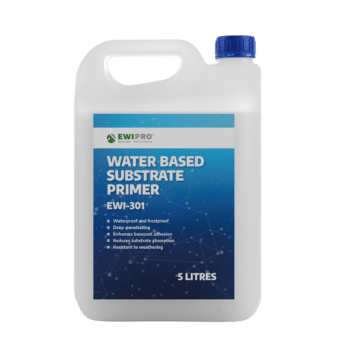
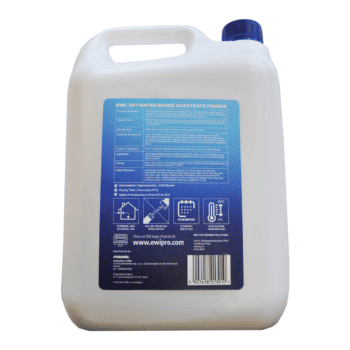
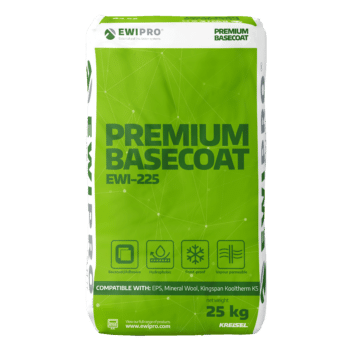
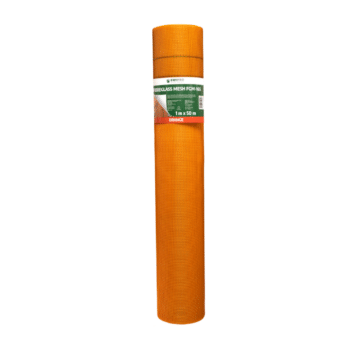
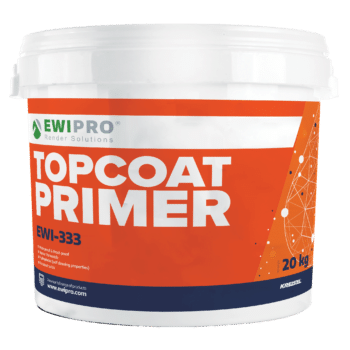
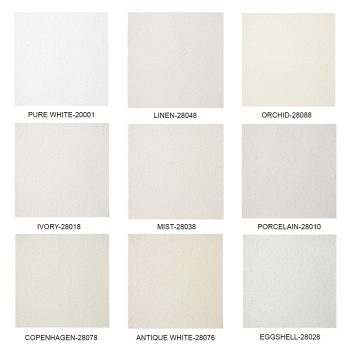
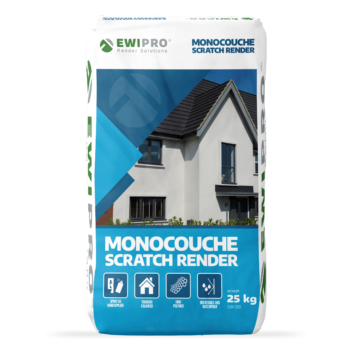

21 thoughts on “Coloured Render Cost Per Square Metre”
This is very helpful. Thank you. I only need 15m2 of coloured render, but i have noticed the rolls of mesh are 50m2. Can you by a third of a roll so we don’t have it left over! If so can you please let me know how!
Hi Benji, due to high demand we now sell fibreglass mesh by the square metre. You can purchase it here: https://ewistore.co.uk/shop/ewi-66640-fibreglass-mesh-1m2-coverage/
really interesting blog, have been thinking about re-rendering my property for some time but it’s so difficult to get a real idea of how much materials actually cost
This is a very clear and useful blog post. It has helped clarify the distinction between the different renders and selling the renders by the squared metre has certainly made things easier when purchasing quantities.
Thanks Sophie glad you found it useful!
Very interested in your product and am curious if it is available in USA.
Also can this render be applied to the existing one, stucco wall, Thankyou.
can i apply colored render on top of old render?
Hi Liz, it can be done depending on the condition of your old render. If it’s in good shape then you’d just need to use our premium adhesive as a basecoat rather than the EPS basecoat.
How much would it add to the total to put insulation in as well?
this popped up as an advertisement on my e-mail today, very interesting but could do with being updated for current rates.
Maximum depth of traditional sand and cement on render boards
Hi Tony, the maximum depth of traditional sand and cement render on render boards varies depending on the type of render board used and the specific application. As a general rule, traditional sand and cement render can be applied in layers, with each layer typically not exceeding 10-15mm in thickness to ensure proper adhesion and to avoid cracking. For total thickness, it is recommended not to exceed 20-25mm in total depth when applying multiple layers.
Hi, i am looking at matching some colour render on my house to what is there at the minute. We bought the house about 6 months ago and I have been waiting for the weather to warm up a bit, but i don’t know the type of render on their at the moment. Having scratched a bit off, it is not a painted render, the render itself defintely has a colour, so doing a bit of research i guess it is monocouche or silicone render, but how do i tell the difference. Any help would be greatly appreciated
Hi Lucy, there should be a noticeable texture difference; monocouche will feel like rough stone, whereas silicone is likely to be smoother and have small particles of aggregate in it. Silicone Render is also a thin coat system so likely to be thinner than monocouche.
Hi, I am currently looking to do the side wall of my semi detached house. My question is if I don’t do the front and back of the house and just do the side will I still benefit from the energy savings of the solid wall insulation or do you need to do the whole house to make it worthwhile? The side wall only has has a couple of windows and the rooms that are on that wall seem to all be really cold.
Thanks in advance for help
Hi John, you can just insulate one or two walls but the whole point behind EWI is to create an uninterrupted thermal envelope. The walls you don’t insulate will act as significant thermal bridges and you’ll lose a lot of heat through them as heat looks for the path of least resistance. As a result, the savings will be far lower. What type of insulation were you looking to use?
Great insights on the costs associated with coloured render! It’s really helpful to break down the price per square metre. I appreciate the detailed analysis, especially when considering EWI options for home improvements. Thanks for sharing!
Can you please advise what I need to cover a small corner area 35cm long x 10cm of Wetherby’s foam external wall insulation boards, that have been left bare after a fence it had been cut round, has blown down.
The house had insulation, render and roughcast in 2013 by mis-sold Government Green Deal.
Been let down so many times by companies and am worried about water ingesting into the rest of the insulation.
Thank you.
Hi Mrs Harris,
Thanks for reaching out. It’s completely understandable that you want to get this sorted quickly to prevent water ingress into your insulation.
Could you please contact our technical team at 0800 133 7072? They will be happy to assist you!
This was really informative! I didn’t realize how many factors can influence the cost of coloured render per square metre. It’s great to get a clearer idea for budgeting my next home renovation. Thanks for breaking it down!